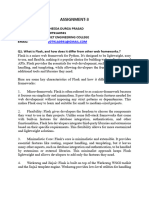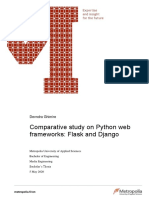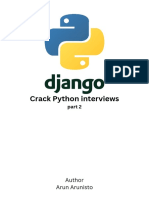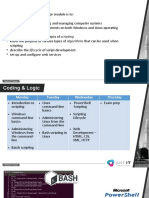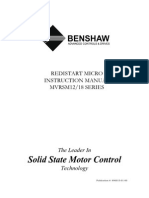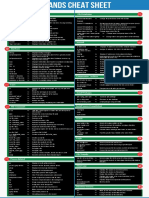0% found this document useful (0 votes)
51 views2 pagesDjango Flask Difference and Comparision
Django and Flask are two prominent Python web frameworks with distinct design philosophies; Django is a high-level, 'batteries-included' framework ideal for larger applications, while Flask is a lightweight, micro-framework suited for smaller projects. Key differences include Django's built-in features like ORM and admin interface, compared to Flask's modularity and flexibility. Flask requires minimal setup and is customizable, whereas Django promotes rapid development with a more structured approach.
Uploaded by
Akshat JoshiCopyright
© © All Rights Reserved
We take content rights seriously. If you suspect this is your content, claim it here.
Available Formats
Download as DOCX, PDF, TXT or read online on Scribd
0% found this document useful (0 votes)
51 views2 pagesDjango Flask Difference and Comparision
Django and Flask are two prominent Python web frameworks with distinct design philosophies; Django is a high-level, 'batteries-included' framework ideal for larger applications, while Flask is a lightweight, micro-framework suited for smaller projects. Key differences include Django's built-in features like ORM and admin interface, compared to Flask's modularity and flexibility. Flask requires minimal setup and is customizable, whereas Django promotes rapid development with a more structured approach.
Uploaded by
Akshat JoshiCopyright
© © All Rights Reserved
We take content rights seriously. If you suspect this is your content, claim it here.
Available Formats
Download as DOCX, PDF, TXT or read online on Scribd
/ 2







